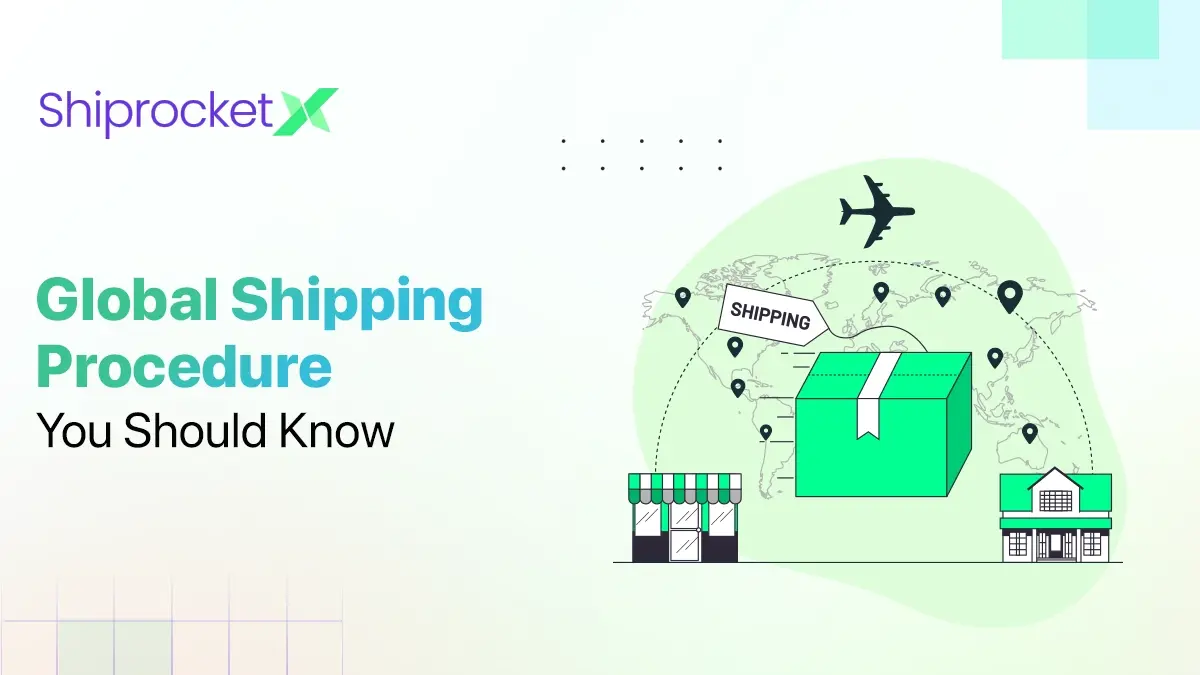Shipping Date & Delivery Date: Clarity, Difference, & Factors [2024]
Nowadays, online customers expect eCommerce companies to deliver their orders in the shortest time possible. To retain and gain new customers, companies continually need to upgrade their shipping and delivery processes. Customers want to know when they can expect to receive their packages, and businesses need to ensure they meet these expectations.
Shipping and logistics solutions services like Shiprocket are solving such business needs with ‘all-in-one solutions’ that leverage technology and provide customers with tracking information, price comparison and more.
However, despite the sea of information available, clarifying the terms ‘shipping date’ and ‘delivery date’ is necessary. Here, we address these differences, begin defining these terms, and understand their critical distinctions.

Definitions & Key Distinctions
Here, we look at shipping date and delivery date definitions as relevant to the eCommerce industry and their distinct roles in driving customer happiness.
Shipping Date: This is the date on which the eCommerce company commissions the shipping partner to deliver an order to a customer. It is also the day the shipment leaves the warehouse or fulfillment center. This date commences the delivery process of an order and is essential to track the status of orders.
Delivery Date: It indicates the day the customer will receive their order. At checkout, the eCommerce site provides the delivery date to help customers decide if they can wait until that day to receive the order. As a result, the delivery date can significantly influence their purchase decision.
Now that we know the definitions of the shipping date and delivery date, let us understand some of the unique or critical terms associated with them.
- Order Date: The order date is the day a customer places an order on the eCommerce website. The purchase order is prepared and contains unique factors that help identify the order as belonging to a customer. Ideally, it is a phone number or an email ID. The order date triggers the logistics life cycle of the order. The fulfillment center or the warehouse will pick up and pack the product only when it receives the order.
- Invoice Creation Date: The invoice creation date is the day by which the transactional details of the order are raised. It shall include all information on the ruling: products and their costs, the total amount due, seller and customer information, payment details, and delivery information. One crucial invoice component is the mention of the order shipping date.
- Expected Arrival Date: The expected arrival date marks when a customer expects to receive their order based on factors like the estimated shipping date, delivery rate, and other aspects. They are presented as the probable date of shipment since they may be impacted by unforeseen circumstances like natural disasters or labour strikes affecting truckers. These factors fall beyond the control of both eCommerce businesses and shipping companies.
- Shipping Pace: Shipping pace indicates how promptly a carrier can deliver an order to its recipient. It might be expressed in time spans such as 3-5 working days or through express delivery or standard service. Carrier performance conditions, environmental variables, and consumer preferences influence this pace. Some consumers could be open to paying more for expedited shipping, while others might value cost-free options more highly.
Factors Affecting Shipping Date
Several factors can influence shipping dates, both internal and external to the eCommerce company. Let us look at the factors that may impact shipping dates.
- Lead Time: One of the most important factors that impact shipping dates is the lead time. It is the time needed between order placement and the shipping date. It changes from order to order as the products tagged are different. Products ready to be delivered typically have shorter lead times than those requiring manufacturing or assembling before shipping. Other reasons that lead times may increase include backorders or inventory shortages. Sometimes, more significant issues, like a lack of raw materials to complete the product, can affect the lead time.
- Shipping Cut-Offs: This is an essential factor that determines the shipping date. To ensure on-time delivery, most eCommerce websites have a deadline by which orders must be placed to be shipped on a particular day. Some may ask for orders to be placed before 7 p.m. or have weekend or public holiday shipping cut-offs. Orders placed after the cut-off are processed only the next business day.
- Manpower Availability: Human resources are significant for the quick processing of orders. The estimated shipping dates can be met only when warehouses and fulfillment centers have adequate handlers for picking, packing and assembling.
- Transit Time: Transit time is needed for the parcel to travel from the warehouse or fulfillment center. It depends on the shipping carrier, the shipping mode (express or standard), and the distance to the destination. Remote locations, Tier 2, and Tier 3 locations might need longer transit times.
- Natural Disturbances: External factors such as natural calamities (floods, fire, earthquakes) and weather changes can disrupt transportation and affect shipping dates. These factors might delay shipping dates.
- Regulations: Regulations and compliance become very important, especially for international shipments. To maintain local inventory, companies must follow many rules, like customs procedures, inspections, and approvals, that impact shipping dates.
- Political and Economic Scenarios: A country’s economic or political situation can disrupt shipping dates. Political unrest, local or public holidays, protests, and union strikes might challenge transportation, leading to delays in the shipping process.
Which Factors Influence the Delivery Date?
Several factors influencing the delivery date of orders include:
- Location: The delivery location is very important when calculating delivery dates. For local deliveries, estimated delivery dates can be short. While it could be longer for far away or difficult to reach destinations.
- Route Condition: The route condition is critical in determining the likely delivery timeline. The high tolls and road conditions can impact the estimated delivery date.
- Product Details: The movement of large-sized orders and bulky items will take longer, as they may need more giant trucks for transit. On the other hand, two-wheelers can deliver smaller-sized packets over shorter distances. Hence, the product details can influence the estimated delivery time significantly.
- Estimated Shipping Date: The estimated shipping date can significantly influence the delivery dates. If the shipping date of the order gets extended due to any reason, it is likely to cause a delay in the delivery date.
- Mode of Shipping: The mode of shipping, or how your goods are delivered, might have an impact on the delivery date. Air shipping, for example, is quicker than land shipping but also more costly. If you require your delivery soon, you should consider air shipping. But, if you are on a tight budget, land shipping may be a better option.
Conclusion
By now, the concept of shipping date and delivery date and how they differ must be clear to you. To thrive in today’s advancing digital world, eCommerce companies need to meet their customers’ demands like timely delivery, secure packaging and so on. Thus, eCommerce companies need to collaborate with reliable shipping companies like Shiprocket, which have the capability and resources to get the courier services done effectively without any inconveniences.
Shipping dates may be changed only in extraordinary situations like floods or lack of raw material supply. But the important part is to communicate shipping dates changing to manage customer expectations better.
No, they are different. The invoice date is the date on which the transaction is completed, while the shipping date is the date on which the order is handed over to the carrier for delivery.
The arrival of new-age, analytics-driven shipping partners has increased estimated shipping and delivery date accuracy. These providers consider historical data analytics to manage logistics efficiently.





